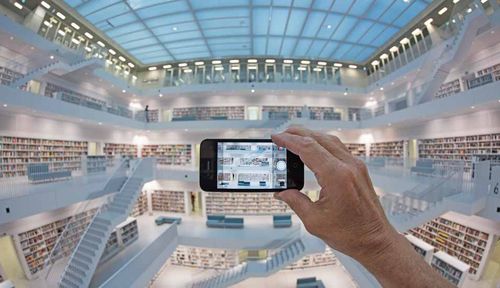Digital Teaching: The Experience of the Analog Group in a Digital Space

When I started the new decade a year ago, I looked at my schedule with some anxiety. An incredible number of opportunities and events have arisen and announced for the year 2020, overlaps cannot be ruled out and it was a mystery to me how to manage all of this.
When a new type of virus appeared in China in January, I read about it in the newspapers, but it didn’t affect me more. At the end of the semester, it didn’t matter at all, and when a classmate arrived late by train for an exam due to a falling tree, he limited that conversation. The lockdown in March frustrated most of my plans for the New Year. The situation was new and disturbing. I spent no lecturing time at home, made incredible number of phone calls, read novels by 19th century authors and bought myself a new racing bike. In the naive idea of being able to teach in the usual way again for the summer semester, I ignored the emerging new reality.
“After my first online course, I’m done.”
However, when it became apparent that the summer semester 2020 would be taking place online, I decided to engage with it. Until then, I hadn’t been interested in my virtual attendance at university, and now I had to make up for it. Passwords, access data, and accounts had to be confirmed, organized, and set up. Together with my colleagues, I learned about Zoom, Teams, DFNconf, Screen Share, and Audio Quality. Skype disappeared from my vocabulary and replaced by zooming. On the one hand, I thought with fear about the quality of the German broadband expansion, I drew incoherent excerpts from the courses in Instagram stories, and was amazed and relieved by how smooth and elegant the new semester in general was. But the human fell by the side of the road. After my first online course, I was exhausted and didn’t know what to do with myself. The energy released while teaching stood between me and the screen and I didn’t know how to direct it.
My topic is photography – a daily medium that completely defines our daily life and has become an indispensable part of it. We can unlock our smartphones with a camera and use the camera to communicate. Every second thousands and thousands of photos are taken somewhere in the world and most of them disappear into the cloud. Digital Photography is fundamentally different from its analog predecessor. Moments are no longer captured on a negative forever, but rather translated into a file using an algorithm. We are constantly producing a flood of images that exist in some way but are too abstract to be truly understood.
Teaching challenges as media performance
In addition to this torrent of photos, there are now digital meetings, sessions, seminars and conversations that are also conducted via camera. In this way, teaching becomes a media performance that must be thought about in a participatory manner, otherwise it develops the qualities of the podcast. It’s so easy to get lost and let the voices of teachers and fellow students chatter on your laptop. The physical tensions resulting from olfactory perception, physical closeness, and altered manifestations of the seasons disappear. It is so easy to stare at a screen indifferently in isolation, solitude, and irregularity.
In order to continue to create a collective feeling, an analog group experience in the digital space, new possibilities must be contemplated. Thanks to digital teaching, for the first time I can compile a list of participants very quickly with a group of attendees. I have a face to every name and can address students quickly and directly. New ways of communicating can be tried in this way. All of these digital events have in common that they have to act differently in virtual space than in a real meeting. Body language moves only to a limited extent, and verbal language plays a new role. Irony, alienation, irritability and enthusiasm play a crucial role in personal encounters, but they are difficult to convey in the digital space: they depend on subtle details and nuances.
In order to find a common language with students that takes these subtle differences into account and raises their awareness, in the spring I unofficially placed the Situationist International artist group at My Course Center for Digital Lessons. In the 1960s, this group questioned Guy Debord’s authority and social structures from an artistic point of view and revealed social icons that are reflected, for example, in urban planning. Because digital teaching required a new learning structure and students had experienced in the spring how urban life was completely turned upside down, situational strategies seemed to suit me to engage with new realities.
Take on new perspectives
After introducing students to how the group works in a summary, I assign the following task:
Mission until next date:
On this Sunday (no matter where you live, what the weather is, what is your state of mind):
11:00 AM, turn left outside the house in question, take a picture (subject is optional).
In the next possibility, scroll to the right, and take a picture (subject is optional).
After 100 meters turn in a circle, take a picture up, one down.

Communicator. Reader. Hipster-friendly introvert. General zombie specialist. Tv trailblazer





